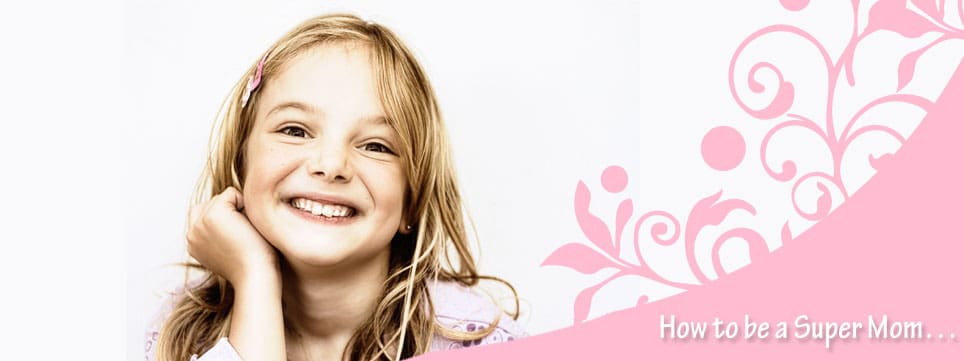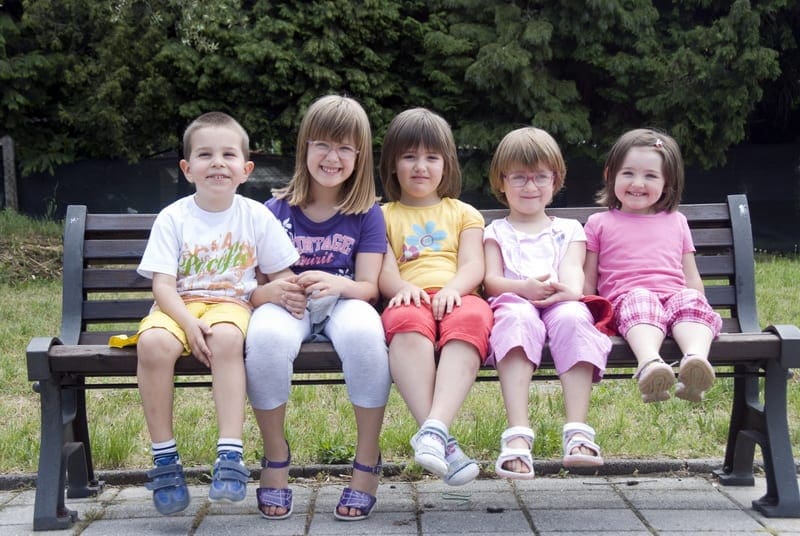Assisted Reproductive Technologies (ART) have revolutionized the field of reproductive medicine, offering hope and opportunities for individuals and couples struggling with infertility. These innovative techniques have both advantages and disadvantages, which need to be carefully considered when making decisions about family planning. In this article, we will explore the pros and cons of ART and their impact on individuals and society.
On the positive side, one of the major advantages of ART is the increased chances of pregnancy. For individuals or couples facing fertility challenges, ART provides alternative methods to conceive a child. Techniques such as in vitro fertilization (IVF) and intrauterine insemination (IUI) have significantly improved the success rates of achieving pregnancy. This opens up new possibilities for individuals who may have otherwise been unable to have biological children.
Another advantage of ART is the availability of genetic screening options. Through preimplantation genetic testing, embryos can be screened for genetic disorders before they are transferred to the uterus. This helps to reduce the risk of passing on hereditary diseases to future generations. It also allows individuals and couples to make informed decisions about the embryos they choose to implant, increasing the likelihood of a healthy pregnancy and a healthy baby.
Furthermore, ART offers the opportunity for individuals and couples to become parents who may not have been able to do so otherwise. Same-sex couples, single individuals, and those with medical conditions that affect fertility can all benefit from ART. It provides a pathway to parenthood, allowing individuals to experience the joys and challenges of raising a child.
However, it is important to consider the disadvantages of ART as well. One significant drawback is the high cost associated with these technologies. ART procedures can be expensive, and multiple treatment cycles may be necessary to achieve a successful pregnancy. This financial burden can be overwhelming for many individuals and couples, limiting access to these treatments and creating inequalities in reproductive healthcare.
In addition to the financial strain, ART can also take a toll on individuals and couples emotionally. The journey of infertility and the process of ART can be physically and emotionally demanding. The uncertainty of success, the need for multiple procedures, and the potential for disappointment can lead to heightened stress and anxiety. It is crucial for individuals and couples to have a strong support system and access to counseling services to navigate these challenges.
Ethical concerns surrounding ART also need to be addressed. The creation and fate of excess embryos raise complex ethical dilemmas. Decisions about what to do with unused embryos can be difficult and deeply personal. The commodification of reproductive services, where individuals may be seen as consumers rather than patients, raises questions about the ethics of treating reproduction as a market commodity. Furthermore, the potential for “designer babies,” where genetic manipulation is used to select specific traits, raises ethical concerns about the boundaries of reproductive technology.
Another potential disadvantage of ART is the increased risk of multiple pregnancies. Multiple embryos may be transferred to increase the chances of success, but this can result in multiple pregnancies, which carry higher health risks for both the mother and the babies. The challenges of caring for multiple infants can also place a significant strain on families.
Finally, the impact of ART extends beyond the individual level and has broader implications for society. Debates over access and affordability of these technologies highlight the need for equitable distribution of resources. The changing definition of family, with ART allowing for various family structures, challenges traditional notions of parenthood. Additionally, the use of ART may widen socioeconomic disparities, as individuals with greater financial means have more access to these technologies.
In conclusion, assisted reproductive technologies have both advantages and disadvantages that need to be carefully considered. While ART offers increased chances of pregnancy, genetic screening options, and the opportunity for individuals and couples to become parents, it also comes with high costs, physical and emotional stress, ethical concerns, and the risk of multiple pregnancies. It is essential for individuals and society to engage in informed decision-making, ethical discussions, and ongoing research to ensure the responsible use of these technologies and to address the broader implications they have on individuals and society.
Advantages of Assisted Reproductive Technologies
Assisted Reproductive Technologies (ART) offer a range of advantages for individuals and couples who are struggling with infertility or other reproductive challenges. One of the key benefits of ART is the increased chances of pregnancy it provides. For those who have been unable to conceive naturally, ART techniques such as in vitro fertilization (IVF) can significantly improve the likelihood of a successful pregnancy.
Another advantage of ART is the availability of genetic screening options. Through preimplantation genetic testing, embryos can be screened for genetic disorders or chromosomal abnormalities before they are transferred to the uterus. This allows individuals and couples to make informed decisions about the viability of embryos and reduce the risk of passing on genetic conditions to their children.
ART also offers the opportunity for individuals and couples to become parents who may not have been able to do so otherwise. Whether due to infertility, same-sex partnerships, or other circumstances, ART provides a pathway to parenthood. Techniques such as donor sperm or eggs, surrogacy, and embryo adoption offer alternative options for building a family.
In addition to these advantages, ART has also contributed to advancements in reproductive medicine and research. The field of assisted reproduction continues to evolve, leading to improved techniques, increased success rates, and a deeper understanding of human fertility. This ongoing progress offers hope for individuals and couples facing reproductive challenges and expands the possibilities for creating a family.
Disadvantages of Assisted Reproductive Technologies
Assisted Reproductive Technologies (ART) offer hope to individuals and couples struggling with infertility, but they also come with their fair share of disadvantages. It is important to consider these drawbacks before embarking on the journey of ART.
One of the major disadvantages of ART is the high cost associated with these procedures. Fertility treatments can be expensive, and multiple cycles may be required before achieving a successful pregnancy. This financial burden can put a significant strain on individuals and couples, adding to the already emotional and stressful nature of infertility.
Another disadvantage of ART is the physical and emotional stress it can cause. The process of undergoing fertility treatments, such as hormone injections and invasive procedures, can take a toll on the body. Additionally, the emotional rollercoaster of hope and disappointment can be overwhelming for those going through ART.
Ethical concerns are also a significant disadvantage of ART. The creation and fate of excess embryos raise ethical dilemmas, as does the commodification of reproductive services. The concept of “designer babies,” where genetic traits can be selected, also raises ethical questions about the boundaries of reproductive technology.
Furthermore, there is a risk of multiple pregnancies associated with ART. While the goal is often to achieve a successful pregnancy, there is an increased likelihood of multiple pregnancies with ART. This can lead to health risks for both the mother and the babies, as well as the challenges of caring for multiple infants simultaneously.
Overall, while assisted reproductive technologies offer hope and possibilities, it is essential to be aware of the potential disadvantages. High costs, physical and emotional stress, ethical concerns, and the risk of multiple pregnancies are all factors that individuals and couples should carefully consider before pursuing ART.
Financial and Emotional Burden
When considering the use of Assisted Reproductive Technologies (ART), it is important to acknowledge the significant financial and emotional burden that individuals and couples may experience. The cost of ART procedures can be substantial, with expenses including fertility medications, laboratory fees, and medical consultations. These financial obligations can quickly accumulate, especially if multiple treatment cycles are required to achieve a successful pregnancy.
Moreover, the emotional toll of ART should not be underestimated. The journey of undergoing fertility treatments can be filled with hope, anticipation, and disappointment. The uncertainty of success can lead to feelings of stress, anxiety, and frustration. Each failed attempt can be emotionally draining, and individuals and couples may find themselves grappling with a range of complex emotions.
In addition to the financial and emotional strain, the need for multiple treatment cycles can further add to the burden. ART procedures may not always result in a successful pregnancy on the first attempt, and individuals may need to undergo multiple rounds of treatment. This not only prolongs the process but also intensifies the emotional rollercoaster that individuals and couples may experience.
Furthermore, the uncertainty of success with ART can be mentally and emotionally challenging. Despite the advancements in reproductive technologies, there is no guarantee of a positive outcome. This uncertainty can create additional stress and anxiety, as individuals and couples grapple with the question of whether their efforts will ultimately be successful.
In conclusion, the financial and emotional burden of ART cannot be overlooked. The high costs, multiple treatment cycles, and uncertainty of success can take a toll on individuals and couples. It is important for those considering ART to be aware of these challenges and to seek support, both financially and emotionally, throughout the process.
Ethical Considerations
Ethical considerations play a significant role in the discourse surrounding Assisted Reproductive Technologies (ART). These technologies raise complex moral dilemmas that require careful examination and consideration. One of the key ethical concerns is the creation and fate of excess embryos. During the ART process, multiple embryos may be created, but not all of them are used for implantation. This raises questions about what should be done with these surplus embryos. Some argue that they should be donated to other couples or used for scientific research, while others believe that they should be given the same rights and protections as any other human life.
Another ethical issue that arises with ART is the commodification of reproductive services. The use of ART often involves significant financial costs, which can create a system where access to reproductive technologies is limited to those who can afford it. This raises questions about whether reproductive services should be treated as a commodity and whether access to these technologies should be based on financial means. Additionally, the potential for designer babies, where genetic traits can be selected and manipulated, raises concerns about the ethical boundaries of reproductive technologies and the potential for creating a society where children are engineered to meet certain criteria.
Overall, the ethical considerations surrounding ART are complex and multifaceted. They require careful thought and consideration to ensure that these technologies are used responsibly and in a way that respects the rights and dignity of all individuals involved.
Risk of Multiple Pregnancies
The use of Assisted Reproductive Technologies (ART) has revolutionized the field of reproductive medicine, offering hope to individuals and couples struggling with infertility. However, one of the potential drawbacks of ART is the increased risk of multiple pregnancies. This can occur when multiple embryos are transferred to the uterus during in vitro fertilization (IVF), increasing the chances of more than one embryo implanting and resulting in multiple pregnancies.
While the idea of having twins or even triplets may seem exciting to some, it is important to recognize the potential health risks associated with multiple pregnancies. Both the mother and the babies are at a higher risk of complications compared to singleton pregnancies. The mother may experience gestational diabetes, high blood pressure, and an increased likelihood of needing a cesarean section. The babies may be born prematurely, have low birth weights, and face a higher risk of developmental issues.
Caring for multiple infants can also present significant challenges for parents. The demands of feeding, changing, and comforting multiple babies can be overwhelming, both physically and emotionally. It can also be financially burdensome, as the cost of providing for multiple children simultaneously can be substantial.
It is important for individuals and couples considering ART to be aware of the potential risks and challenges associated with multiple pregnancies. This information should be taken into account when making decisions about the number of embryos to transfer during IVF. Open discussions with healthcare providers can help individuals and couples make informed choices that prioritize the health and well-being of both the mother and the babies.
Impact on Society
Assisted Reproductive Technologies (ART) have a significant impact on society, raising important questions and sparking debates on various fronts. One of the key areas of concern is access and affordability. While ART has opened up new possibilities for individuals and couples struggling with infertility, the high costs associated with these technologies can create barriers for many. The expense of procedures such as in vitro fertilization (IVF) and genetic screening may limit access to those who cannot afford the hefty price tags, leading to disparities in reproductive healthcare.
Another aspect of ART’s impact on society is the changing definition of family. With the advent of technologies like sperm and egg donation, surrogacy, and embryo adoption, the traditional notions of what constitutes a family have evolved. These advancements have challenged societal norms and prompted discussions around the rights and responsibilities of parents, donors, and surrogates. The complex web of relationships that can arise from these reproductive technologies has sparked debates about the legal and ethical implications involved.
Furthermore, ART has the potential to widen socioeconomic disparities. The cost of treatments, medications, and ongoing care can create a divide between those who can afford these services and those who cannot. This can further perpetuate existing inequalities, as individuals with greater financial resources may have more access to reproductive options and technologies. The implications of this disparity extend beyond the individual level and impact society as a whole.
Overall, the impact of ART on society is multifaceted and far-reaching. It raises questions about access, affordability, family dynamics, and socioeconomic disparities. As society continues to grapple with these issues, it is crucial to have ongoing discussions, research, and policies in place to ensure that ART is used responsibly and ethically, and that everyone has equal opportunities to pursue their reproductive goals.
Conclusion
Assisted reproductive technologies (ART) have revolutionized the field of reproductive medicine, offering hope and possibilities to individuals and couples struggling with infertility. However, like any medical intervention, ART comes with its own set of advantages and disadvantages that must be carefully considered.
On the positive side, ART greatly increases the chances of achieving pregnancy for those who have been unsuccessful through natural means. Techniques such as in vitro fertilization (IVF) and intracytoplasmic sperm injection (ICSI) have proven to be highly effective in helping individuals and couples conceive. Additionally, ART allows for genetic screening, which can help identify and prevent the transmission of genetic disorders to future generations.
Furthermore, ART provides the opportunity for individuals and couples to experience the joys of parenthood. It offers hope to those who may have thought they would never have the chance to have a child of their own. The ability to create a family and nurture a child is a deeply fulfilling experience that ART makes possible.
However, it is important to also acknowledge the disadvantages and potential drawbacks of ART. One of the major concerns is the financial and emotional burden it places on individuals and couples. ART treatments can be expensive, requiring multiple cycles and procedures, which can quickly add up. This financial strain can be overwhelming and may limit access to ART for many individuals who cannot afford the high costs.
Moreover, the emotional toll of the ART journey should not be underestimated. The uncertainty of success, the disappointment of failed attempts, and the rollercoaster of emotions can be incredibly challenging for individuals and couples. The process can be physically demanding and emotionally draining, requiring resilience and support.
Ethical considerations also come into play when discussing ART. The creation and fate of excess embryos raise complex moral questions. The commodification of reproductive services and the potential for creating “designer babies” raise concerns about the ethical boundaries of ART. It is crucial to navigate these ethical dilemmas with careful thought and consideration.
Another significant risk associated with ART is the increased likelihood of multiple pregnancies. While the desire to have twins or more may seem appealing to some, multiple pregnancies carry higher health risks for both the mother and the babies. Caring for multiple infants can also present significant challenges, both financially and emotionally.
Lastly, the impact of ART extends beyond the individual level and has broader societal implications. Access and affordability of ART treatments are hotly debated topics, as they can create disparities and inequalities in society. The definition of family is also evolving with the use of ART, challenging traditional norms and raising questions about the changing dynamics of parenthood.
In conclusion, assisted reproductive technologies offer hope and possibilities for individuals and couples struggling with infertility. They increase the chances of achieving pregnancy, provide genetic screening options, and allow individuals and couples to become parents. However, it is important to consider the financial and emotional burden, ethical dilemmas, the risk of multiple pregnancies, and the broader societal impact of ART. Informed decision-making, ethical considerations, and ongoing research are essential to ensure the responsible use of these technologies and to support individuals and couples on their journey towards parenthood.
Frequently Asked Questions
- What are assisted reproductive technologies (ART)?
Assisted reproductive technologies (ART) are medical procedures that help individuals and couples conceive a child when they are facing fertility issues. These technologies include in vitro fertilization (IVF), intracytoplasmic sperm injection (ICSI), and various other methods that assist with fertilization and implantation.
- What are the advantages of ART?
ART offers several advantages, including increased chances of pregnancy for individuals and couples struggling with infertility. It also provides options for genetic screening, allowing parents to identify and potentially prevent certain genetic disorders in their offspring. Additionally, ART provides the opportunity for individuals and couples to experience the joy of parenthood.
- What are the disadvantages of ART?
ART comes with certain drawbacks. The high costs associated with these procedures can be a significant financial burden for many individuals and couples. The emotional stress of undergoing multiple treatment cycles and the uncertainty of success can also take a toll. Ethical concerns, such as the fate of excess embryos and the potential for creating “designer babies,” are additional considerations.
- How does ART impact society?
ART has broader implications for society. Access and affordability of these technologies can lead to debates and disparities. The definition of family is evolving as ART allows for various family structures. However, it also raises questions about the potential consequences and widening socioeconomic disparities that may arise as a result.
- What are the risks of multiple pregnancies with ART?
ART increases the likelihood of multiple pregnancies, which can pose health risks for both the mother and the babies. Multiple pregnancies require specialized care and can be physically demanding. Caring for multiple infants simultaneously can also be challenging for parents.
- What ethical considerations are associated with ART?
ART raises ethical dilemmas. The creation and fate of excess embryos, the potential commodification of reproductive services, and the ethical implications of selecting certain traits in offspring are some of the concerns. It is important to approach ART with careful consideration of these ethical aspects.











